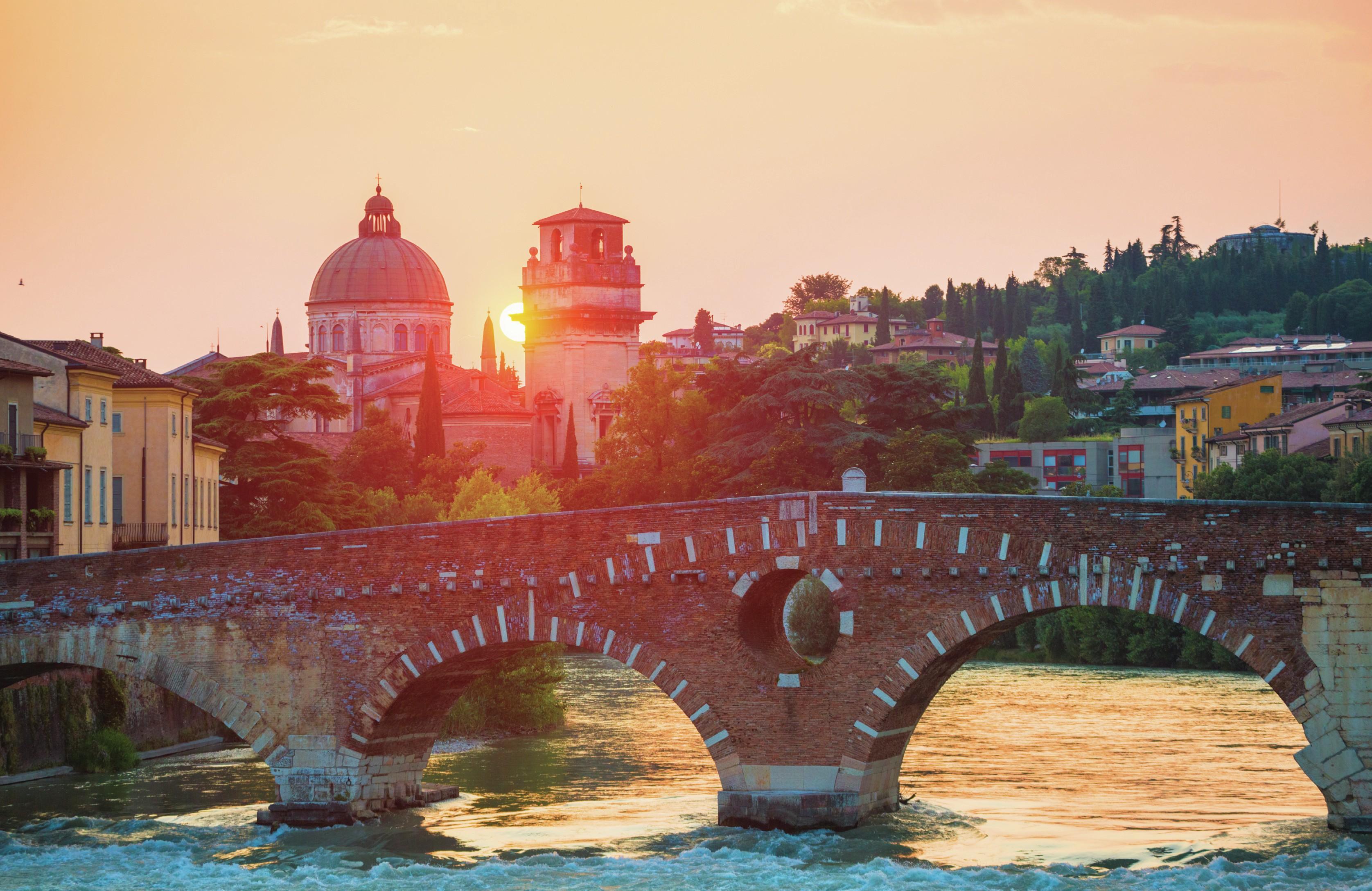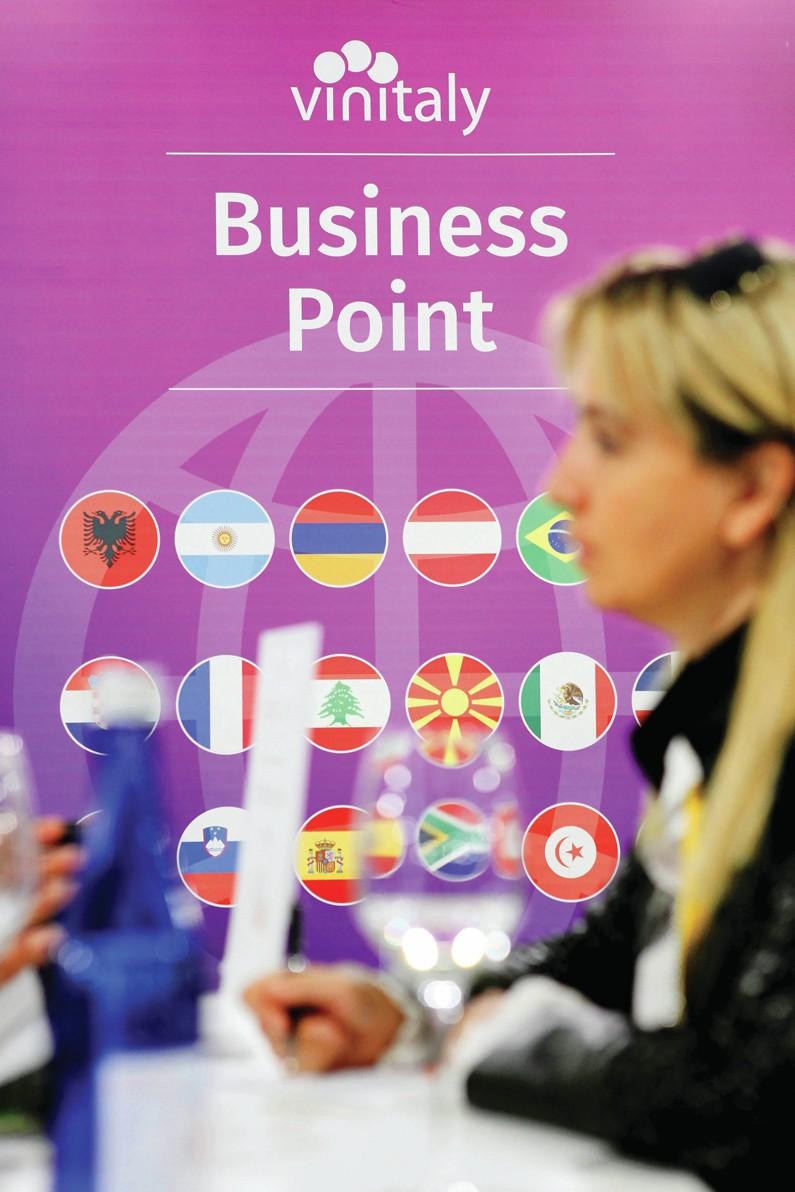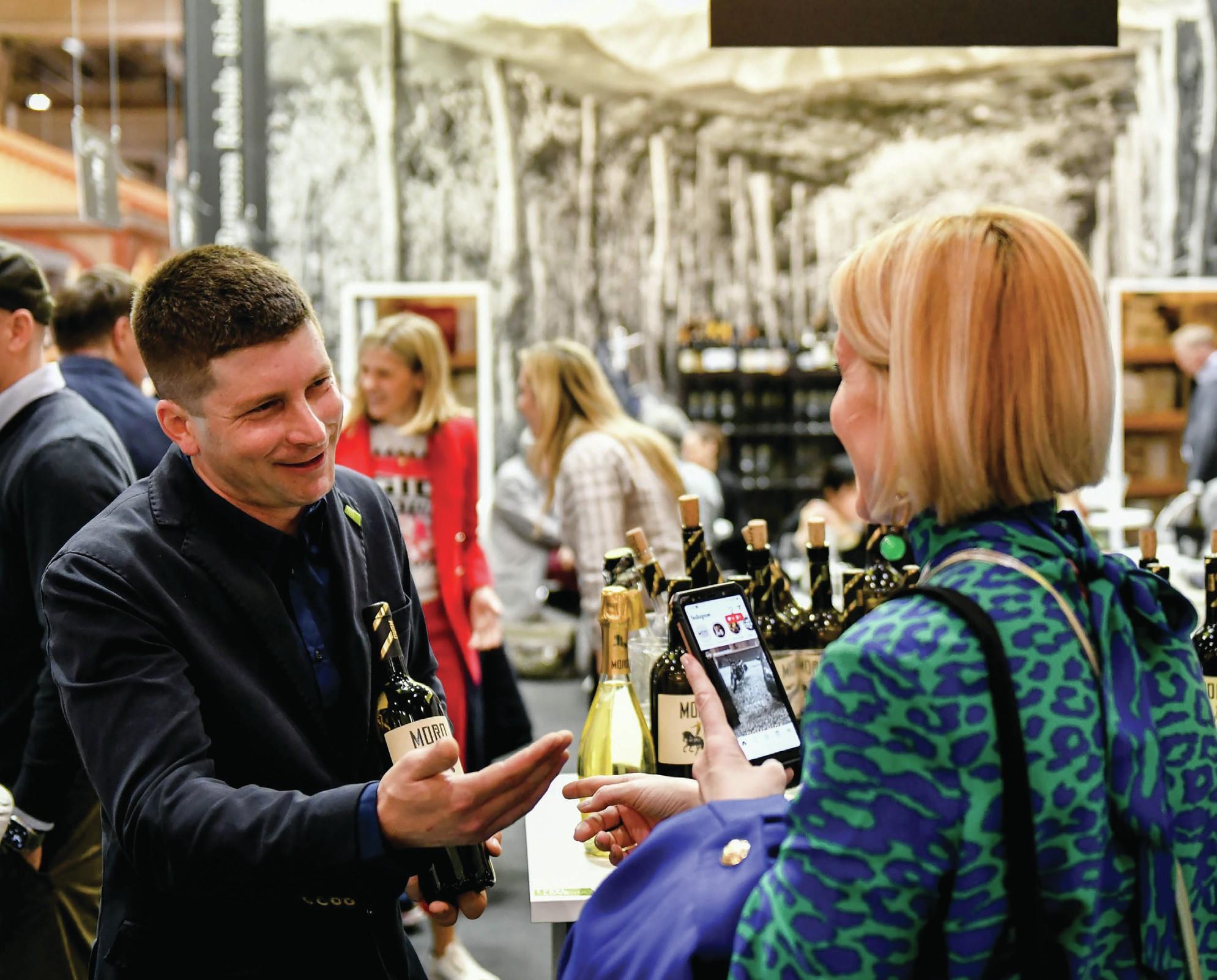This website uses cookies so that we can provide you with the best user experience possible. Cookie information is stored in your browser and performs functions such as recognising you when you return to our website and helping our team to understand which sections of the website you find most interesting and useful.
Fair Verona: what to expect from Vinitaly 2024
This year’s Vinitaly trade fair in Verona will provide a forum to discuss Italian wine as both an economic force and a part of the country’s culture.

The 56th edition of Vinitaly will take place at Veronafiere from Sunday 14 to Wednesday 17 April. Ranging over more than 100,000sq m, the full spectrum of Italian wine, from Amarone to Zibibbo, will be showcased to buyers, journalists and wine professionals from around the world. Maurizio Danese, CEO of exhibition organiser Veronafiere SpA, describes Vinitaly to the drinks business as “the international landmark event for Italian wine”.
“The enormous scope of Italian wine will be on show at Veronafiere,” he says, “from large brands that are already famous on the main markets to consorzi representing companies and denominations, and even small wineries with limited editions ensuring the highest quality. This is the distinguishing feature of Vinitaly’s competitiveness on a global scale, in addition to the historic background of this event and its contribution to the growth of the sector. The event continues to evolve in order to meet the needs of companies that believe and invest in Vinitaly.”
“This is why Veronafiere in recent years has further consolidated its business positioning through a calendar of promotional events abroad, travelling to the main strategic and emerging markets, flanked by extensive incoming campaigns focusing on trade operators and buyers,” Danese adds.
The 56th edition of Vinitaly will be attended by more than 4,000 wineries from all over Italy. “And this figure rises to 4,300 exhibitors if we include Enolitech [international technology exhibition], Xcellent Beers [international exhibition of Italian and international craft beers] and Sol [international olive oil exhibition],” says Danese. “From an exhibition standpoint, the exhibition centre is sold out and consequently in line with previous editions. What has changed, even when compared to the pre-pandemic period, is the event’s everincreasing business propensity.”
There will also be Vinitaly Mixology, a space in the show focused on the growing cocktail category.
“Vinitaly has always been a trendsetter,” Danese suggests. “And mixology is one of the most popular trends on all markets. This is why Veronafiere has launched a dedicated area. Cocktails are not an alternative to wine, but a supplementary area of consumption. The area in the Exhibition Centre was designed to highlight the art of mixing, by now a consolidated market on an international scale.”
Other dedicated areas include Vinitaly Design, which looks at different packaging and glassware, Micro Mega Wines, looking at small producers that punch well above their weight, and Vinitaly Bio, which showcases organic wines. There is also the International Wine Hall, where non-Italian exhibitors will be presenting their products.
There will be a number of masterclasses, providing attendees with the chance to get to grips with the diversity, complexity and quality of Italian wine. “Among the super tastings organised by Vinitaly, I would particularly like to mention Cool under pressure – Italy’s sparkling world, which will focus on Italian sparkling wines and will be presented by Italy’s first Master of Wine, Gabriele Gorelli MW,” explains Danese. “There is also ‘The Four Big Bs of Italian Wine: Barbaresco, Barolo, Bolgheri and Brunello’, and ‘Italy-China: There and back – a journey discovering the new worlds of wine’, both masterclasses given by leading wine writer Ian D’Agata.” Overall, this year ’s show is forecast to attract approximately 93,000 trade members to Verona over the course of four days, and some 11,000 business-tobusiness meetings are expected to happen during the fair.
“Vinitaly is a show for business and as such offers buyers and companies a series of services, starting from the digital agenda on the Vinitaly Plus platform used to arrange targeted and rewarding appointments,” says Danese. “Our platform includes a continuously updated online catalogue and company profiles of exhibitors, ensuring that it is a truly valuable tool for selecting companies based on precise criteria and contacting producers for meetings on show days.”
Coming to the world
Of those 93,000 attendees, around one third (32%) are international, with guests flying from a staggering 143 countries. The presence of US guests is on the up, with the 2023 show attracting 45% more than 2022’s edition. German, British, Chinese and Canadian visitors are also expected to be in abundance. But it isn’t just the case that the world is coming to Vinitaly; Vinitaly is also coming to the world.
“This evolution of Vinitaly’s identity has accelerated over the last two years, under the impetus of Veronafiere’s new governance,” Danese explains. “From September last year to date, Vinitaly has visited 17 cities across the United States, Asia, Europe, Brazil and the Balkans with two objectives: to promote Italian wine and recruit the best buyers for the event held in Verona itself. We will continue to pursue these objectives. In fact, Veronafiere’s new strategic business plan, named One 2024-2026, takes a direction designed to consolidate and grow the Vinitaly brand.”

However, it is clear that the show’s home will always be in Verona, as Danese explains. “Verona is a city famous for wine production thanks to its natural vocation for winegrowing and oenology. Mention need only be made of the worldfamous Amarone della Valpolicella or the wines of Soave and Custoza, as well as Bardolino, Lugana, Enantio and Durello. If we combine this predisposition with the beauty of its historic city centre – a UNESCO World Heritage Site – Verona becomes a natural reality ideal for welcoming wine lovers.”
Indeed, Danese suggests that, whereas the main exhibition is primarily centred around the business of wine, the off-show side, Vinitaly and the City (which takes place on 12-15 April), is more concerned with wine as a source of pleasure.
“In recent years, it has boasted a calendar of appealing and high-quality events – ranging from music to tastings and even literary and artistic talks,” Danese says. “The rationale is to clearly state the dual location of the Vinitaly brand: business in the exhibition centre – and the city centre for wine lovers.”

One notable feature of last year’s show was the presence of fine art, with a special space dedicated to two depictions of Bacchus, the Roman god of wine, which were lent to Veronafiere by Florence’s world-renowned Uffizi Gallery – one by Guido Reni (c.1620), and the other from Michelangelo Merisi da Caravaggio (c.1598). What both artistic works demonstrate is that wine has been an integral component of Italian culture for many centuries, providing a muse for painters and a key part of the country’s celebrated diet.
Danese reveals that the importance of this culture will also be at the forefront of this year ’s Vinitaly. “As we did last year, we are working alongside the Ministry of Agriculture to finalise an agenda of ‘Made in Italy’ cultural and crossover events and proposals, which will also be at the heart of the first National Day envisaged on 15 April,” he says. “On this occasion we will also present research titled: If you take wine away from Italy. A plunge into a half-empty glass.
“This study was carried out by the UIV (Italian Wine Union)–Vinitaly Observatory in collaboration with research specialist Prometeia to investigate, in socio-economic, cultural, tourist and image terms, the disappearance of wine from Italy, and especially from many particularly vocational areas. It estimates the potential damage in the face of people who would prefer to do without a distinguishing feature for our country.
“Staying with culture,” Danese continues, “I would also like to mention another important event organised by Vinitaly, which took place in January, culminating in a private audience of the wine world with Pope Francis. It was a unique occasion and a first for Vinitaly, and many producers who joined the Veronafiere initiative, designed to encourage comparison between this sector and the economic ideals contained in ‘The Economy of Francesco’ programme.” The reception at the Vatican Apostolic Palace was attended by more than 100 Italian producers, with His Holiness telling them: “Given the number of companies involved, the quality of your products and impact in terms of employment, your sector is unquestionably a significant reality on the Italian and international wine scene.” Support from politicians is also “vital” for the fair and for Italy’s wine industry as a whole, as evidenced by the visit of Italian Prime Minister Giorgia Meloni to Vinitaly last year.
“There is no doubt that companies have to deal every day with the requirements of European and Italian laws and regulations.
In addition, promotion of Made in Italy, and consequently even of wine, also passes through a number of incentive programmes set up by the European Union, as well as by the competent ministries in Italy itself,” says Danese.
Political figures
He adds: “Against this background, there is no doubt that attendance by political figures is important for Vinitaly, yet they are so, in general, for all trade fairs. The exhibition sector is a strategic field and economic booster for Made in Italy.” The value of Italy’s wine industry is estimated at €31.3 billion, with 870,000 employees – meaning that of the 38 million working-age Italians, more than 2% are employed by the sector.
“Italian wine is not simply something ‘Made in Italy’, nor merely something that identifies the excellence of Italian products. It is a full-scale brand that recalls the Italian lifestyle and the high production and quality standards that make many Italian products so iconic,” argues Danese.
“Wine fits perfectly into this context and has always been part of our cultural heritage,” he suggests. “It is an expression of vocational territories and the search for quality, as well as aesthetics, craftsmanship and beautiful landscapes. Italian wine embodies the kind of knowhow that every year encourages millions of people to visit our country and enjoy all the artistic and landscape beauty that wine entails. Moreover, wine is a fundamental socio-economic asset for the entire Italian agri-food sector.”
To find out more about Vinitaly 2024, visit: vinitaly.com
What’s on: highlights of Vinitaly 2024
Bottega: The group, situated in Hall 5 on Stand C7, will be presenting its new Limoncino 0.0, a product developed in response to the increasing demand for noand low-alcohol drinks. Bottega claims that Limoncino 0.0, made using the Verdello and Femminello Siracusano lemon cultivars, has plenty of the citrus aroma and freshness that one would expect from a citrus liqueur, but at 0% ABV.
Albino Armani: Exhibiting in Hall 5, Stand A6, the producer from northeast Italy will be presenting its Terre di Plovia 2.0 – two new IGT Venezia Giulia labels named after overlooked indigenous grapes Sciaglin and Ucelut, both from Albino Armani’s vineyards in Valeriano, at the foot of the Carnic Alps. Sciaglin, which takes its name for the Friulian term for terracing (‘s’ciale’), and Ucelut, referring to a bird (or ‘uccello’ in Italian), are historic varieties that almost disappeared, but have now been brought back from the brink thanks to the project.
Consorzio DOC delle Venezie: As part of Vinitaly & The City, the consorzio will be opening an off-show wine bar in Verona’s Piazza dei Signori, in the Loggia di Fra’ Giocondo. The bar, which will be open from 12 to 15 April, is a Vinitaly first for the consorzio, and will be dedicated entirely to different expressions of Pinot Grigio delle Venezie, which itself constitutes around 85% of Italy’s Pinot Grigio production and 43% globally. At the show, Consorzio DOC delle Venezie will be present at Hall 5, Stand F2.
Bisol1542: Gianluca Bisol, ambassador of the historic Prosecco producer that has been part of Gruppo Lunelli since 2014, says: “At Vinitaly 2024, in Hall 8, Stand E5, we will continue to spread the word about the distinctive characteristics of Bisol1542 as a Valdobbiadene Prosecco Superiore producer. We will also be introducing the new wines that showcase the 2023 vintage in the glass, tailor-made in our new underground cellar. We will then offer our five shades of terroir for tasting, which fully respect the fragile and splendid identity of a unique territory, showing how they can adapt to different cuisines, from Venetian to Thai, from spicy to traditional.”
Piccini: Exhibiting at Hall 9, Stand C2, Piccini will be presenting the new range of its Memoro line, which has been designed to “encapsulate the essence of Italian wine culture”, according to the group. Redesigned as part of the group’s Quattro Elementi project, the new Memoro Rosso line comprises a Sicilian Nero d’Avola, a Montepulciano d’Abruzzo, a Pugliese Primitivo and a Merlot from Veneto.
Consorzio Tutela del Gavi: On Saturday 13 April from 4.45pm to 5.45pm, the consorzio will be hosting an off-site masterclass at Cortile Mercato Vecchio. Titled ‘Gavi, Il Signor Bianco Piemontese’, the class commemorates the 50th anniversary of Gavi attaining DOC status (it became a DOCG in 1998). While the consorzio will not have a stand itself at the fair, a number of producers will be present, exhibiting the 2023 vintage.

